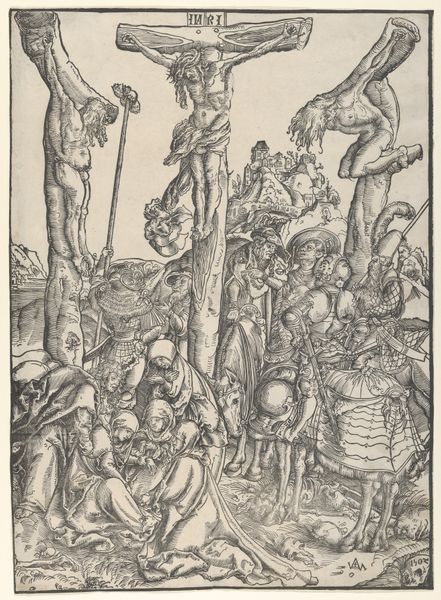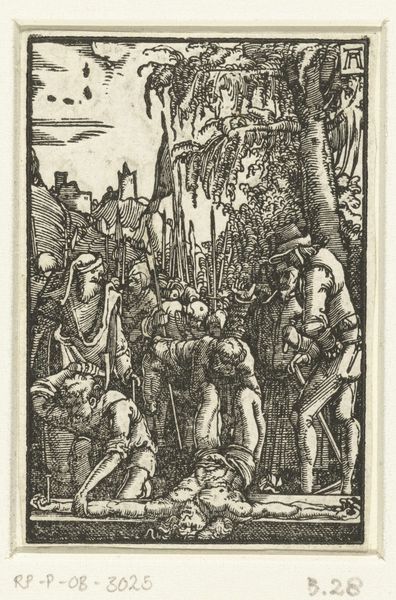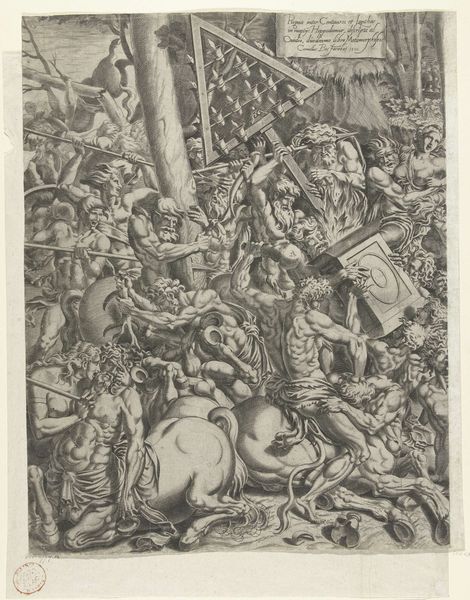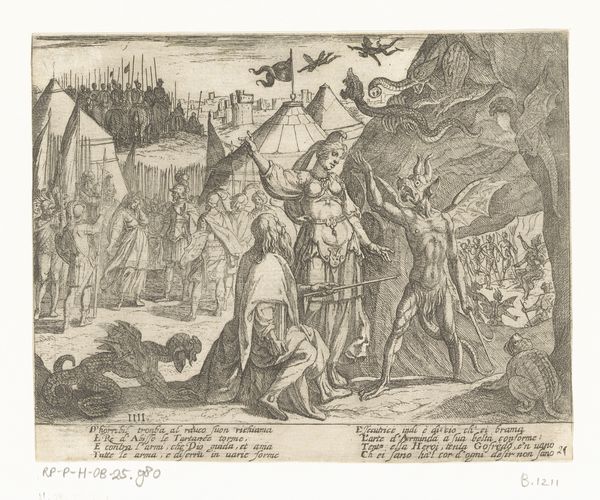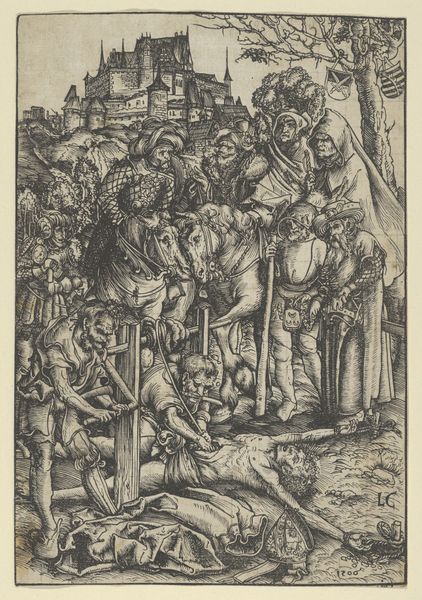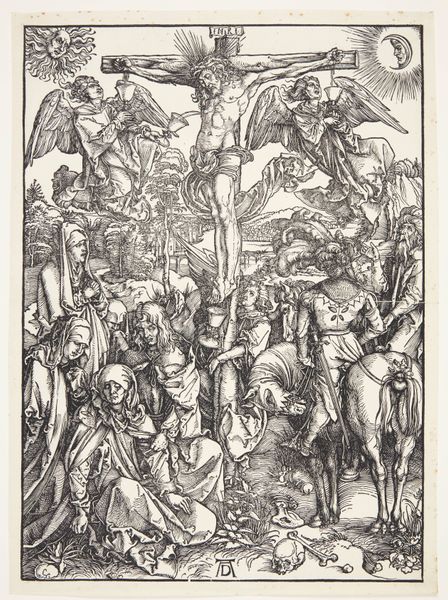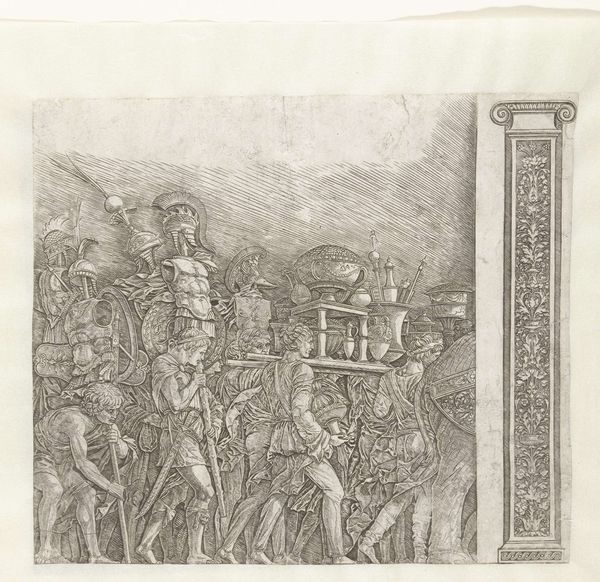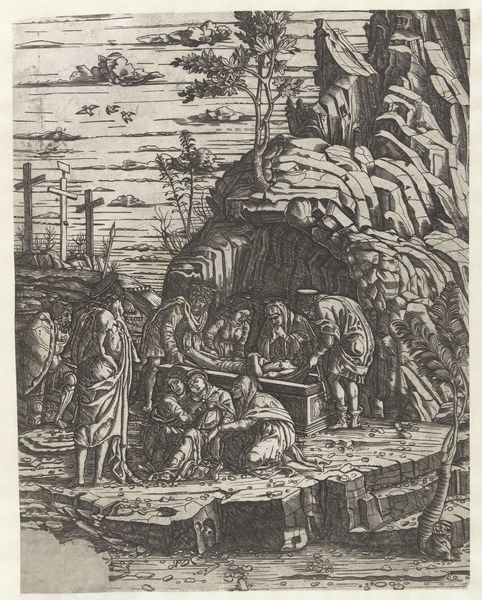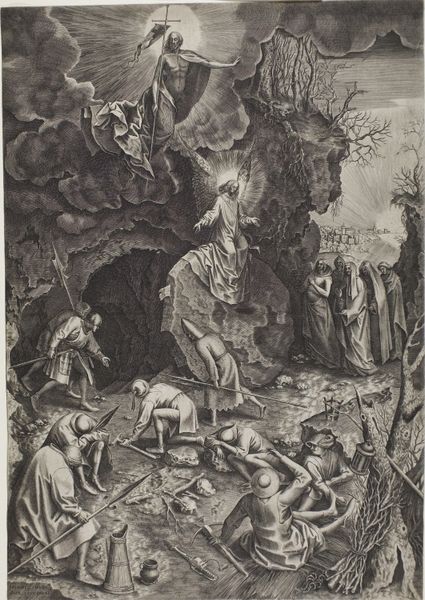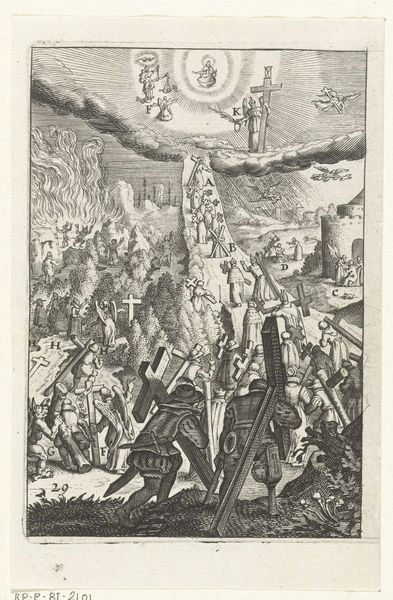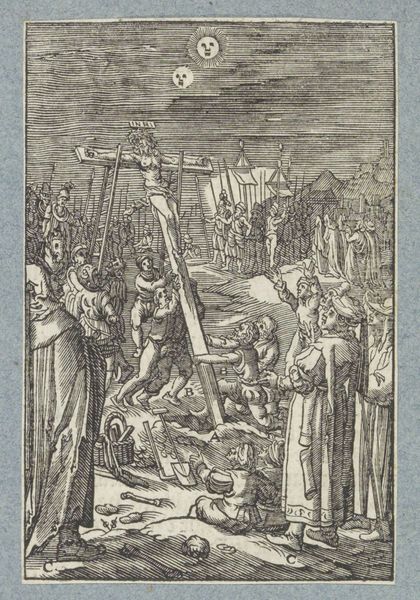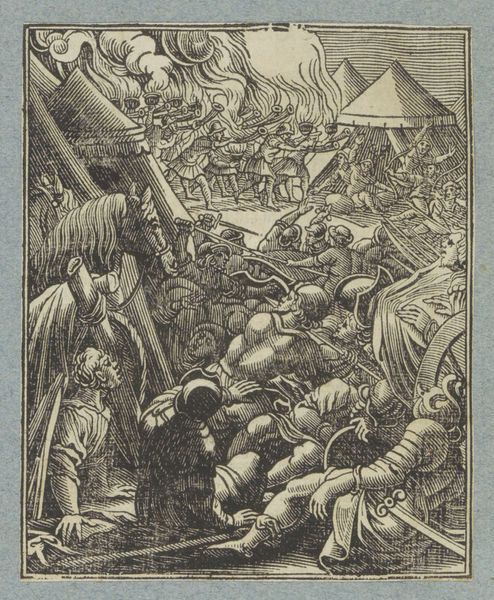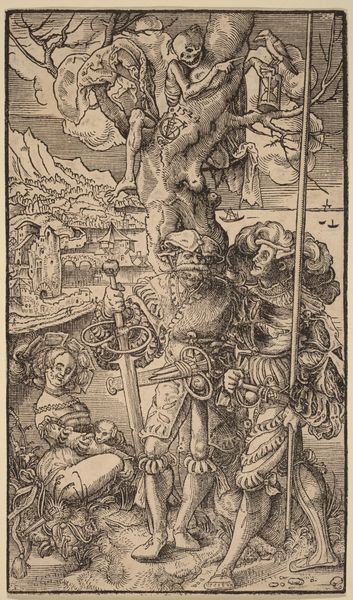
drawing, print, etching, engraving
#
drawing
# print
#
pen sketch
#
etching
#
pencil sketch
#
war
#
perspective
#
figuration
#
ancient-mediterranean
#
line
#
genre-painting
#
history-painting
#
engraving
#
realism
Dimensions: height 286 mm, width 265 mm
Copyright: Rijks Museum: Open Domain
Editor: This is "Soldiers with War Trophies in Caesar's Triumph" made between 1486 and 1492 by Andrea Mantegna. It's an etching, which is incredible considering the level of detail. I'm struck by the weightiness of the image; the figures seem burdened, even in victory. What do you see in this piece, especially given the focus on historical triumph? Curator: The weight you perceive is significant. Beyond a literal representation, Mantegna uses these classical motifs to explore themes of power, memory, and the psychological impact of conquest. Look at how the figures are almost crushed by the trophies. Does this imagery seem to glorify victory, or question it? Editor: I hadn't thought of it as questioning the triumph itself, but now I see it. The repetition of the figures, their bowed heads... it’s not a celebration, but more like a somber procession. Does the style, the etched lines, play into this? Curator: Absolutely. The starkness of the line emphasizes the relentless nature of the march, a visual representation of enduring, perhaps even cyclical, conflict. Consider the emotional baggage each figure carries. These trophies represent not just victory, but loss and subjugation. Do you recognize any other details that support that reading? Editor: The expressions are hard to read, but the downcast eyes... also, the clutter of the composition makes the image feel claustrophobic, like there's no escape. It almost feels like the artist uses cultural memory of ancient triumphal arches, but undercuts them. Curator: Precisely. By evoking classical forms only to subvert their celebratory meaning, Mantegna compels us to reflect on the complexities of power. We must consider what cultural legacies these types of images leave for us in terms of memory. Editor: That’s fascinating. I came in thinking it was a straightforward depiction of a historical event, but now I see the subtle commentary, the layers of meaning embedded within the imagery. Curator: It’s a powerful reminder that images, even those seemingly straightforward, often carry multiple truths and lingering effects through time.
Comments
No comments
Be the first to comment and join the conversation on the ultimate creative platform.
